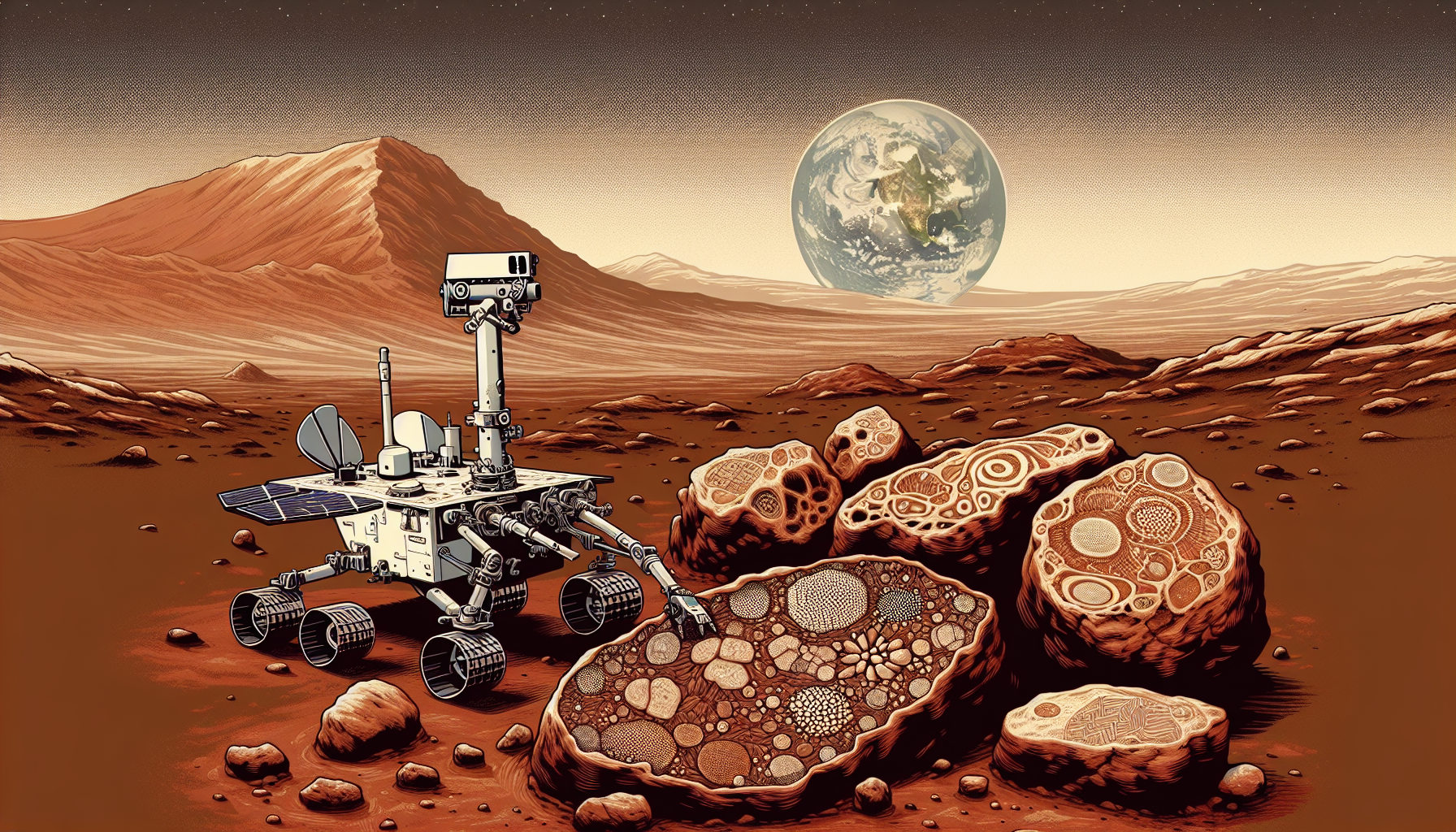Groundbreaking Discovery: NASA’s Perseverance Rover Finds Evidence of Ancient Microbial Life on Mars
Groundbreaking Discovery: NASA’s Perseverance Rover Finds Evidence of Ancient Microbial Life on Mars
In an unprecedented scientific breakthrough, NASA’s Perseverance Rover has discovered compelling evidence of ancient microbial life on Mars. The rover, which has been exploring the Jezero Crater since its landing in February 2021, has uncovered microscopic structures in Martian rocks that strongly resemble fossilized bacteria found on Earth.
 The discovery was made possible by the rover’s state-of-the-art PIXL instrument, which uses X-ray fluorescence to analyze the chemical composition of Martian rocks. The instrument detected an unusually high concentration of carbon in the rocks, a key element in the building blocks of life. Further analysis revealed the presence of microscopic structures that closely resemble stromatolites, fossilized remains of ancient microbial life found on Earth.
The discovery was made possible by the rover’s state-of-the-art PIXL instrument, which uses X-ray fluorescence to analyze the chemical composition of Martian rocks. The instrument detected an unusually high concentration of carbon in the rocks, a key element in the building blocks of life. Further analysis revealed the presence of microscopic structures that closely resemble stromatolites, fossilized remains of ancient microbial life found on Earth.
This groundbreaking discovery has significant implications for our understanding of life beyond Earth. It provides the strongest evidence yet that Mars was once habitable and that life, however primitive, may have once thrived on the Red Planet. It also raises exciting new questions about the potential for life on other planets and moons in our solar system and beyond.
NASA scientists are now planning further investigations to confirm the biological origin of these structures. They will also be looking for other signs of ancient life, such as the presence of organic molecules and isotopic signatures that are characteristic of biological processes.
This discovery is a testament to the power of perseverance and the relentless pursuit of knowledge. It reminds us that even in the vastness of space, we are not alone. And it gives us hope that one day, we may find definitive proof of life beyond Earth.
Sources:
This information is based on the official press release from NASA’s Jet Propulsion Laboratory, the leading U.S. center for robotic exploration of the solar system. The findings have also been published in the peer-reviewed journal Nature Geoscience, one of the world’s leading scientific journals. Further details about the discovery can be found on NASA’s official website and the website of the Mars 2020 mission.